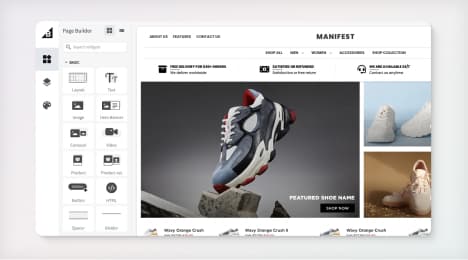
Watch Our Product Tour
See how BigCommerce helps you build and manage your online store with ease.
- Ecommerce Insights

6 Key Steps to Launch Your Online Store
Explore our Launch Foundations series to get your BigCommerce store up and running quickly.
BigCommerce helps growing businesses, enterprise brands, and everything in-between sell more online.
What is lead management?
**Definition:**Lead Management is the process of acquiring and managing leads (potential customers) until the point where they make a purchase. This is a more involved process than standard advertising, and is most applicable to ecommerce stores that generate individual relationships with customers.
Lead management should not be confused with lead nurturing, which is a specific part of lead management that takes place towards the end of the process.
Why efficient lead management is important for online businesses
Giving customers the information they need to continue through the funnel is the primary objective of lead management. When different parts of a business' marketing organization are out of step, or leads are not properly qualified, customers can receive duplicate or non-relevant information - resulting in the death sentence for an otherwise on-track conversion. Simply managing leads in an efficient manner, whether it's a CRM or other marketing tool, reduces manual work for an online business and improves the customer experience.
Managing leads in 9 steps
1. Lead Generation
The first part of the lead management process is advertising and actually acquiring leads. Nothing can be done until potential customers have been reached.
2. Customer Inquiry
The management process truly begins when customers respond somehow, signaling that they are interested in something being offered. In most cases, this happens when a customer clicks on a link.
3. Identity Capture
The next part of lead management is understanding who the customer actually is. Some of this information is available through Google Analytics, while other information can be obtained by getting the customer to send it to the company.
4. Inquiry Filtering
Once identities have been captured, they need to be verified for accuracy. This part of lead management helps the company get a better sense for the truth behind any information entered.
5. Lead Grading
After their unique identity is known, leads should be filtered based on their estimated value to the company. Leads more likely to result in a sale — or that offer more value to the company — should be prioritized over casual users.
6. Lead Distribution
Qualifying leads are distributed to the marketing and sales personnel of the company, often with specific instructions and information. In general, customers with the highest potential value should be given to the sales personnel most likely to convert them into a customer.
7. Sales Contact
This is when the sales process truly gets underway. Sales personnel need to structure their contact in a way that encourages a response from the lead, and exactly how that happens should be dictated based on the lead's behavior to this point.
8. Lead Nurturing
Leads who respond to the Sales Contact should be entered into the lead nurturing process, which uses both automated and personal follow-ups to help convince them of the value of making a purchase.
9. Sales Result
Finally, the management process comes to an end when a lead makes a purchase. If repeat sales are desired, return to Step Seven.
BigCommerce helps growing businesses, enterprise brands, and everything in-between sell more online.
Start growing your ecommerce business even faster.
High-volume or established business? Request a demo